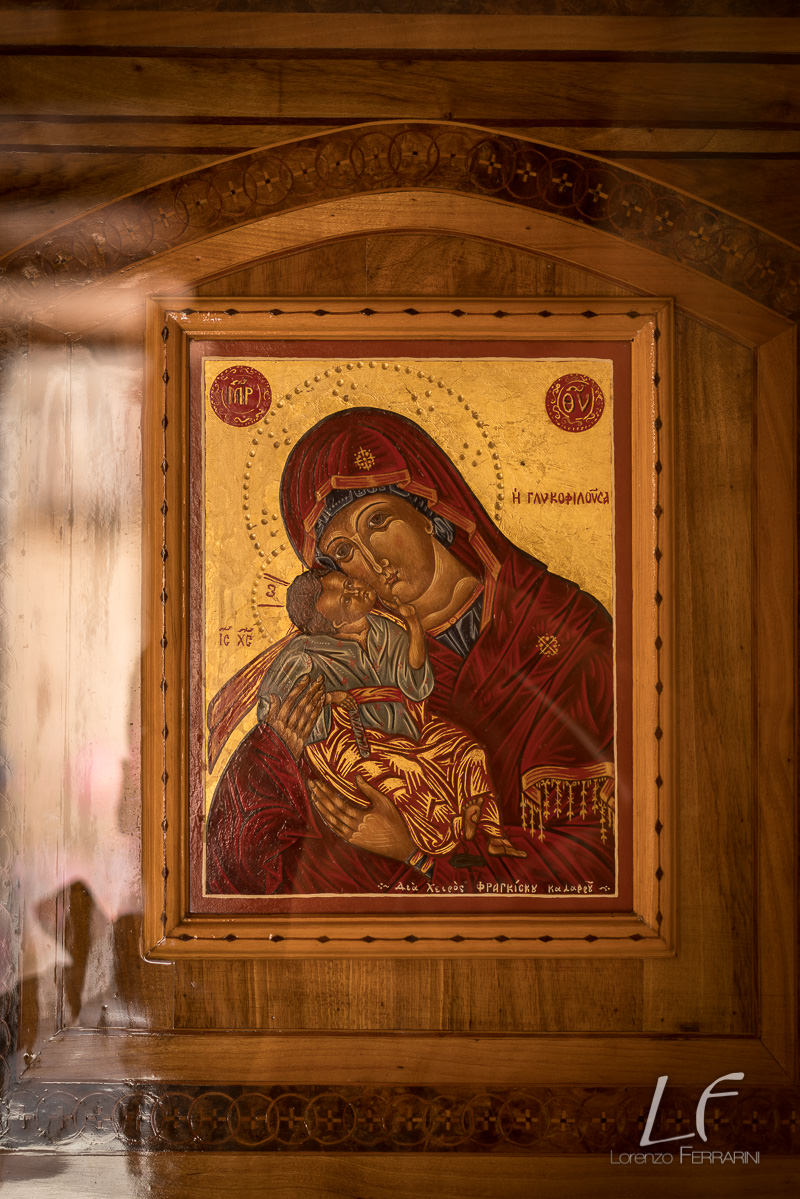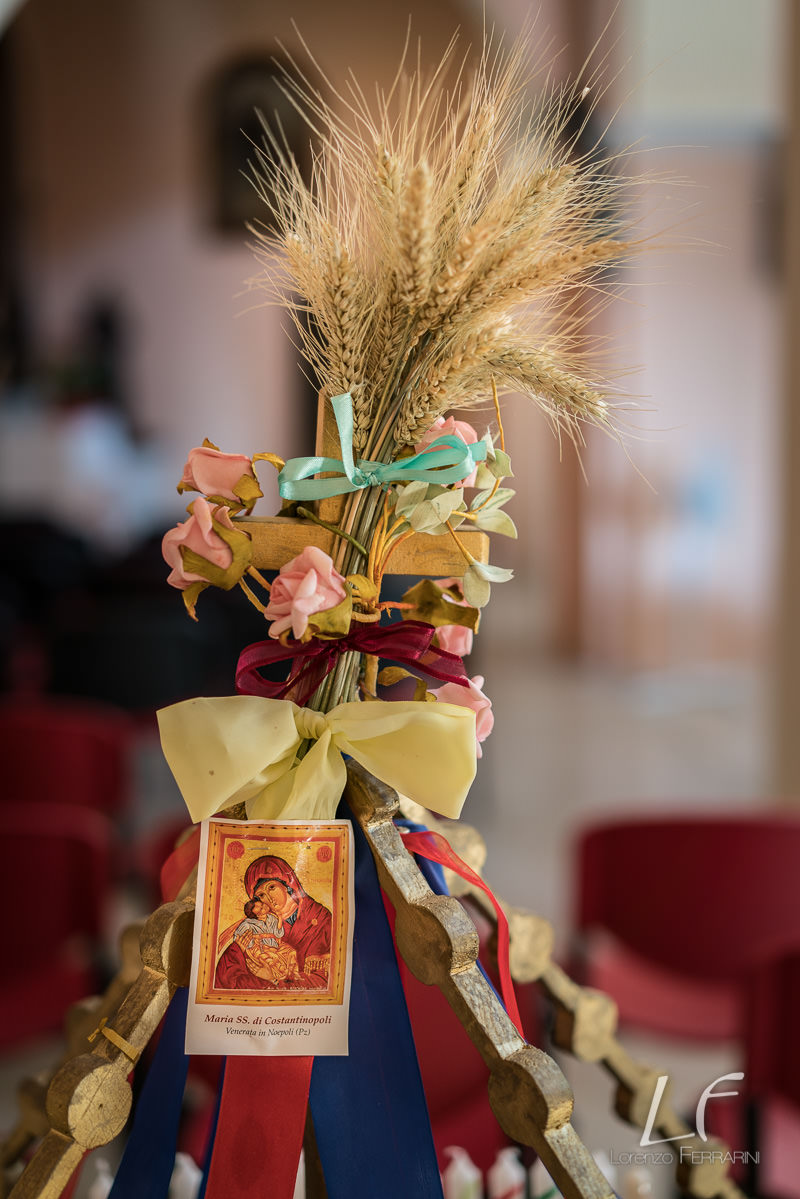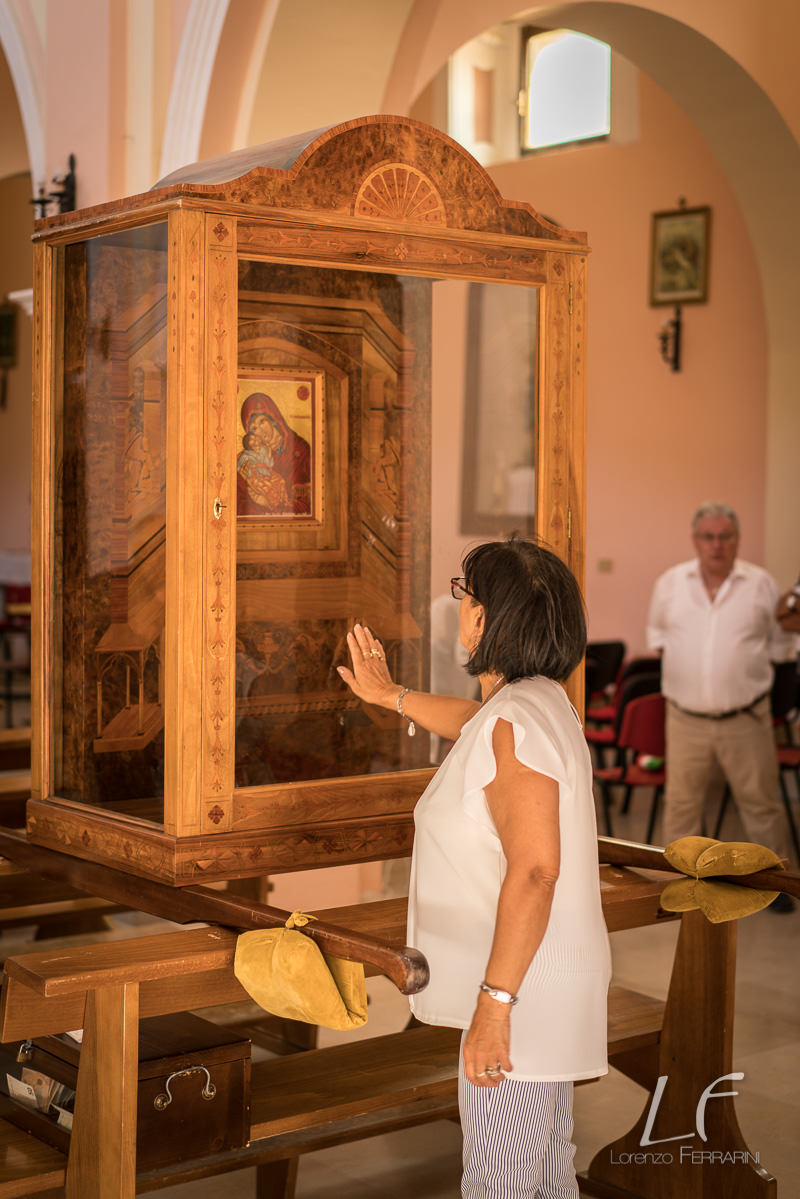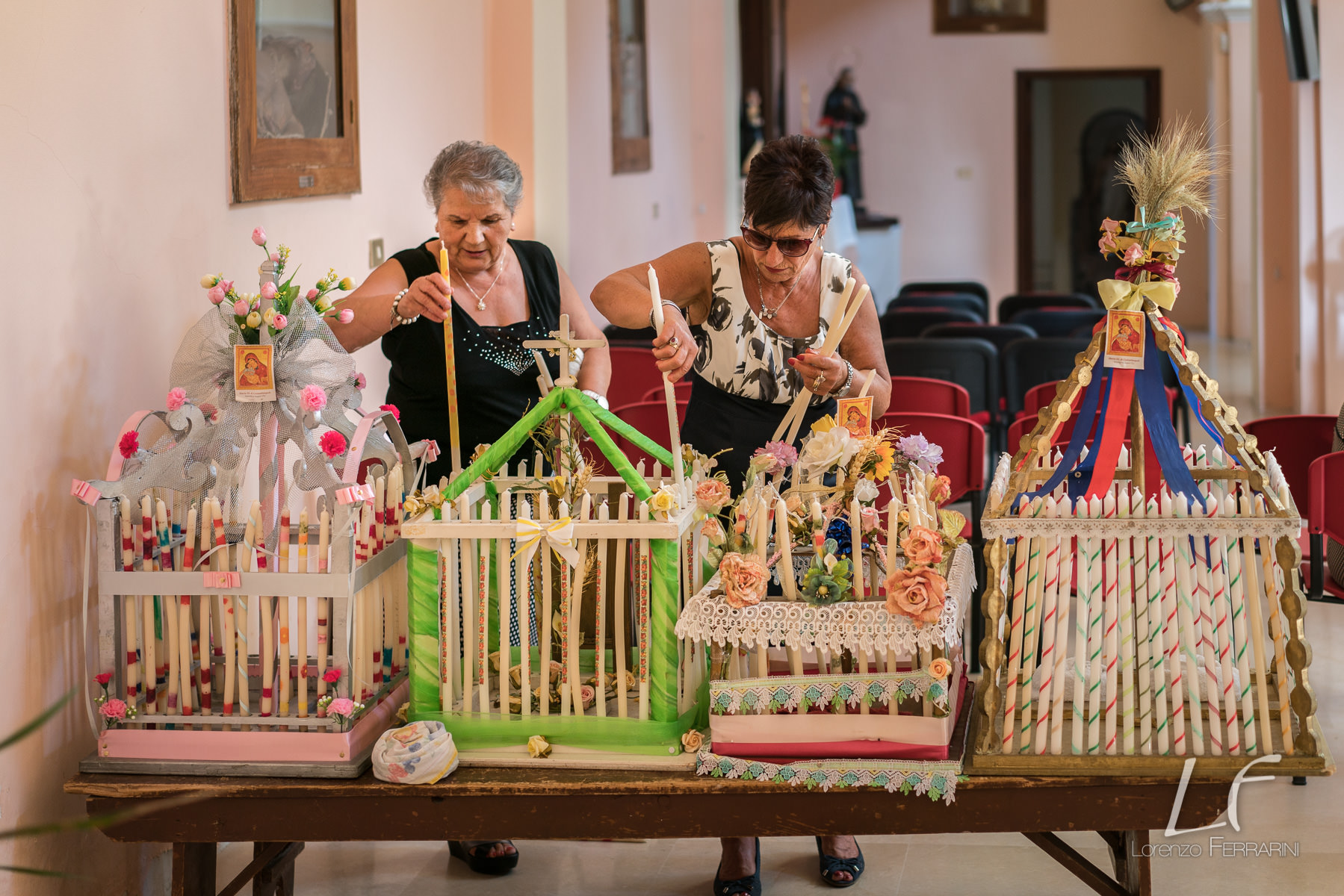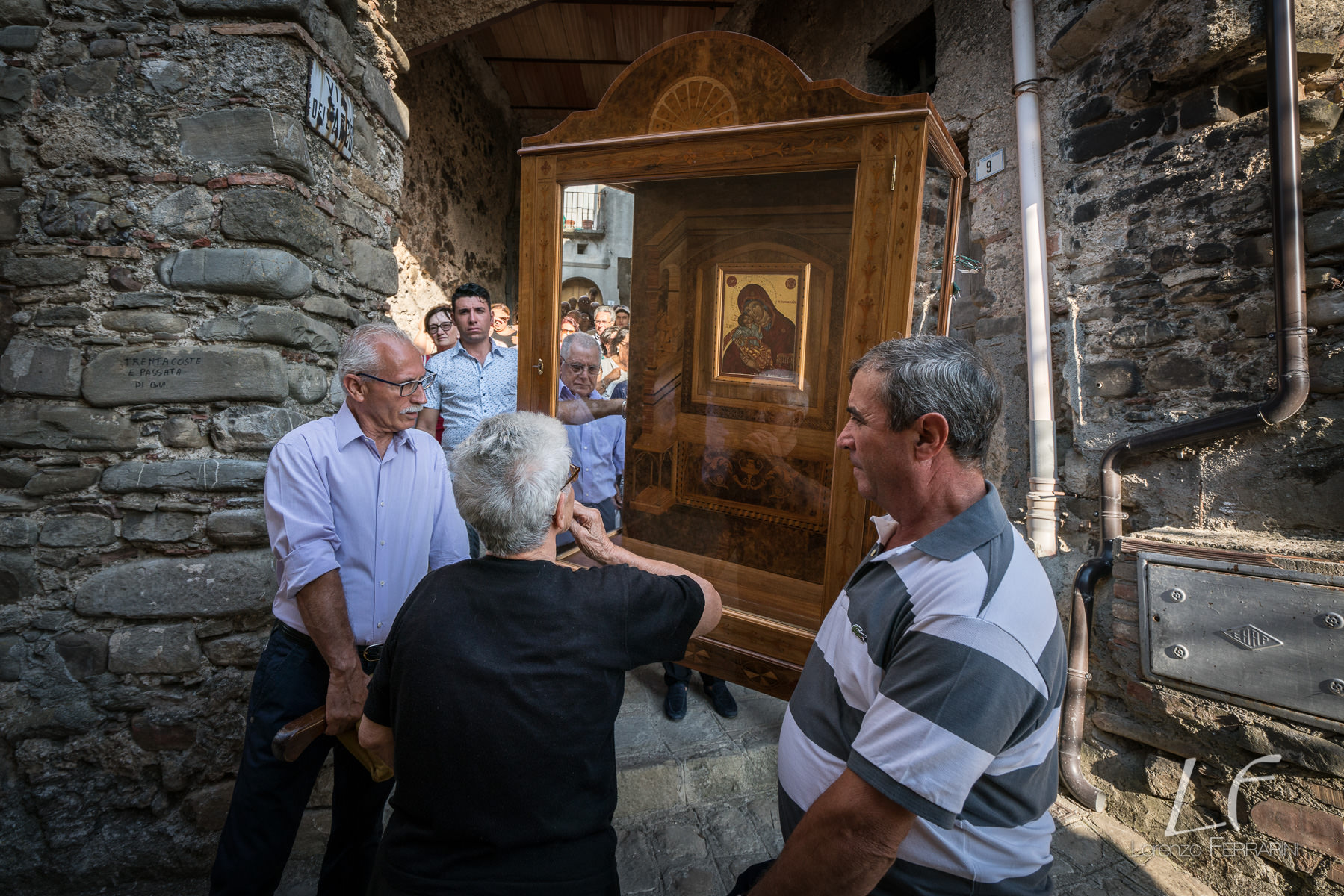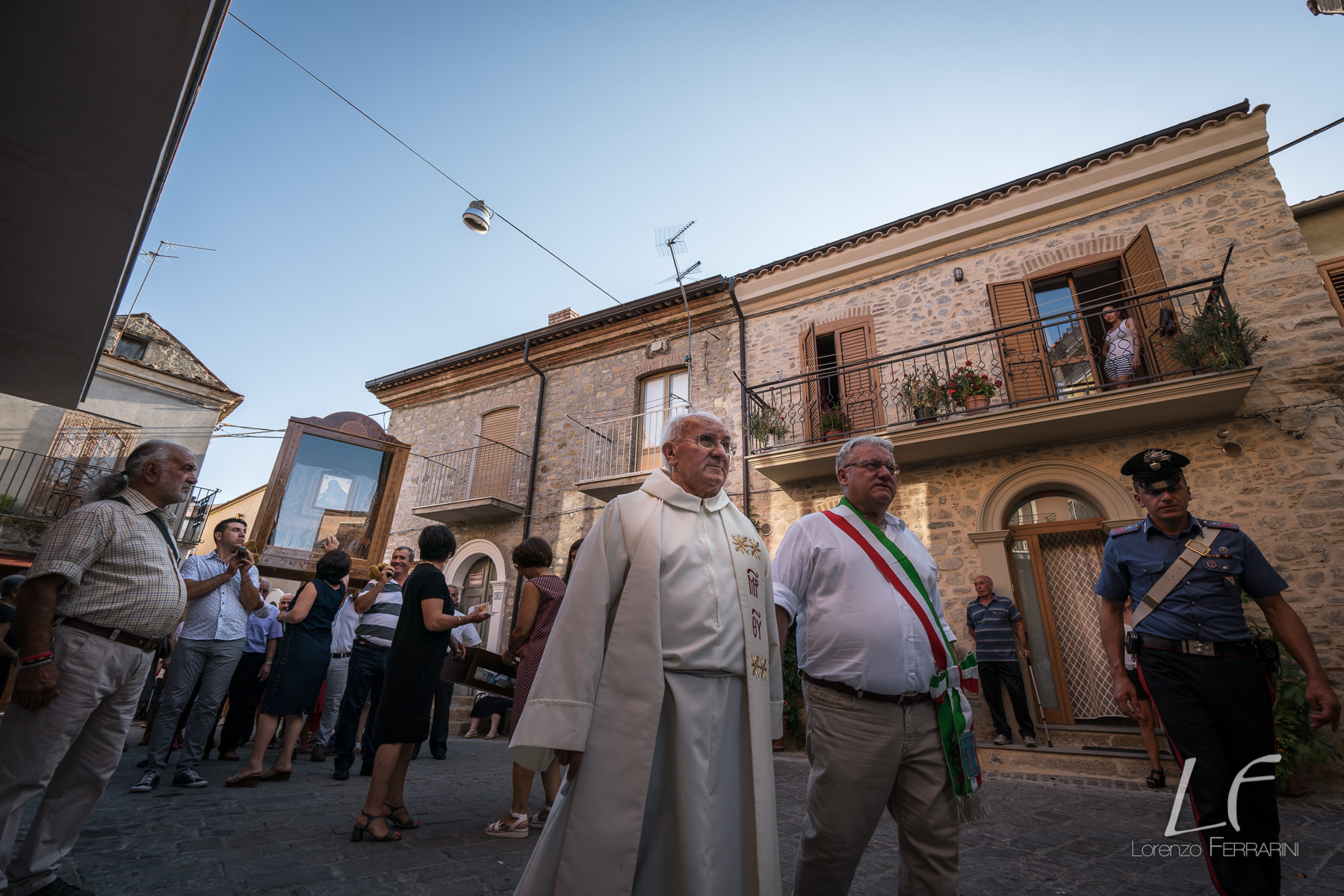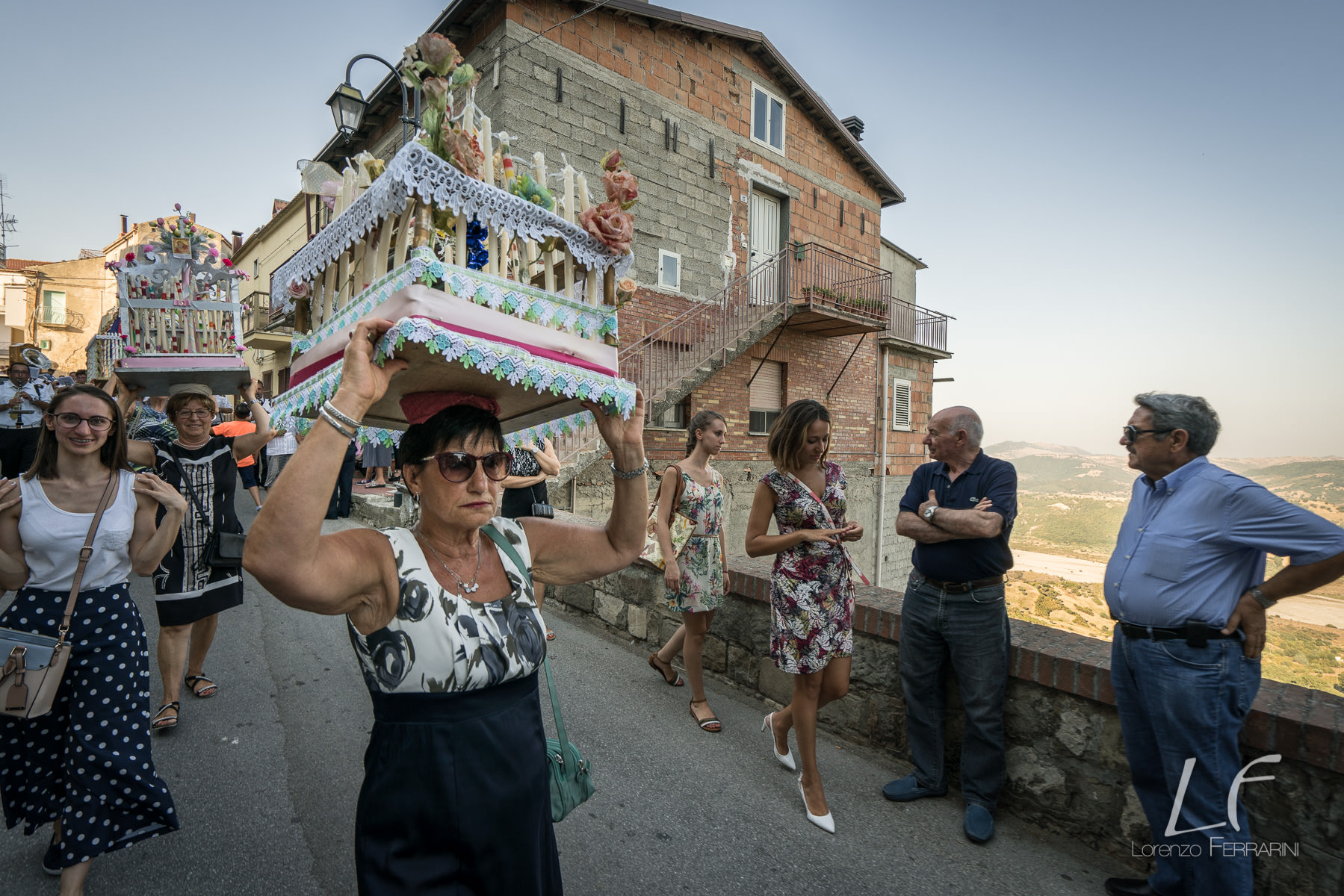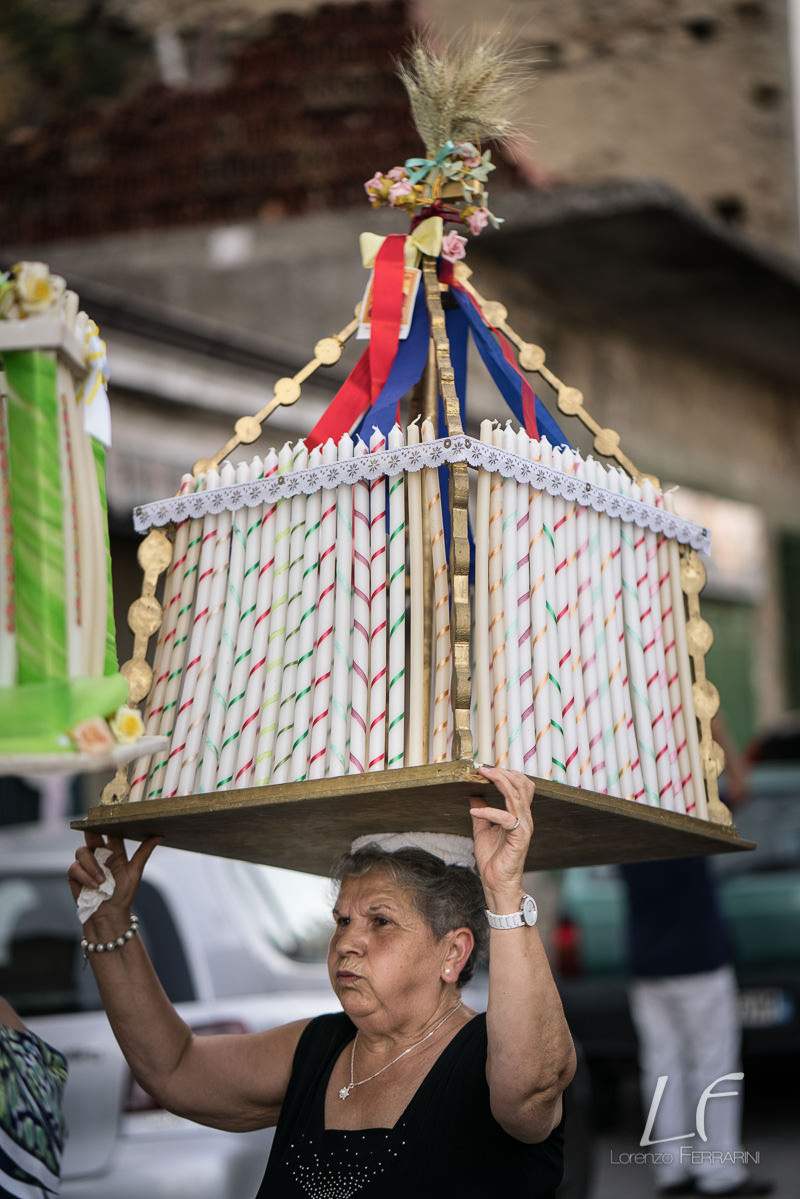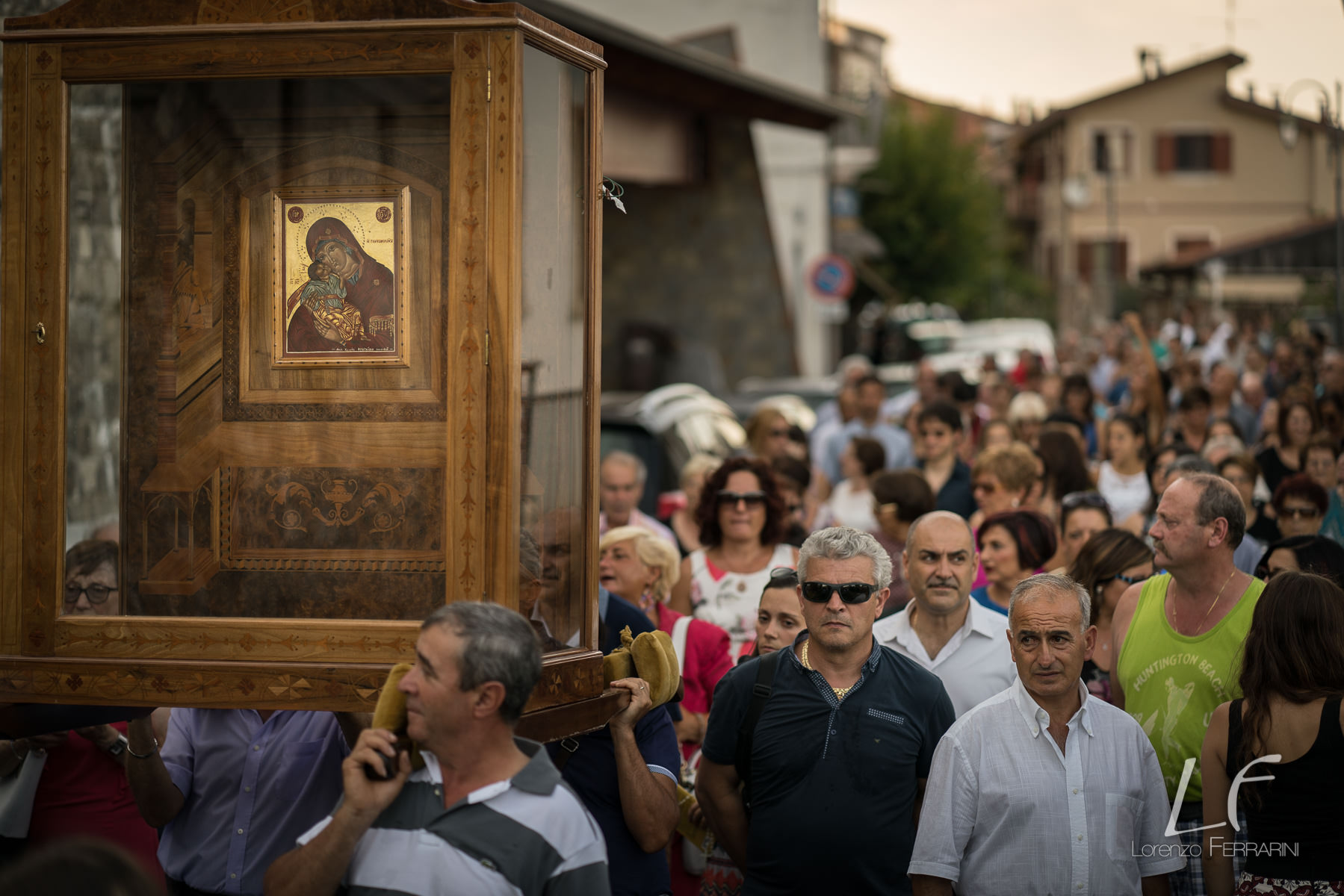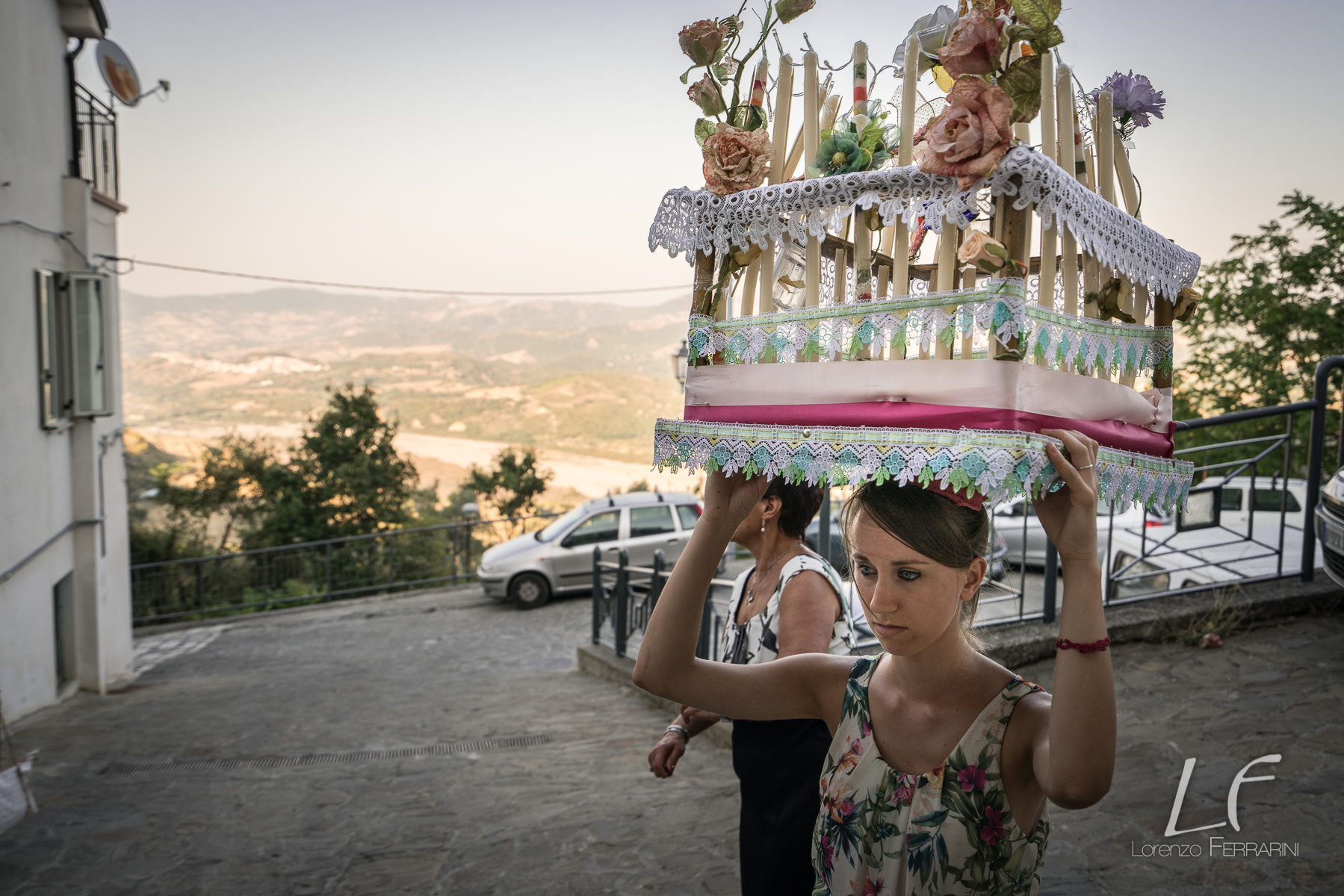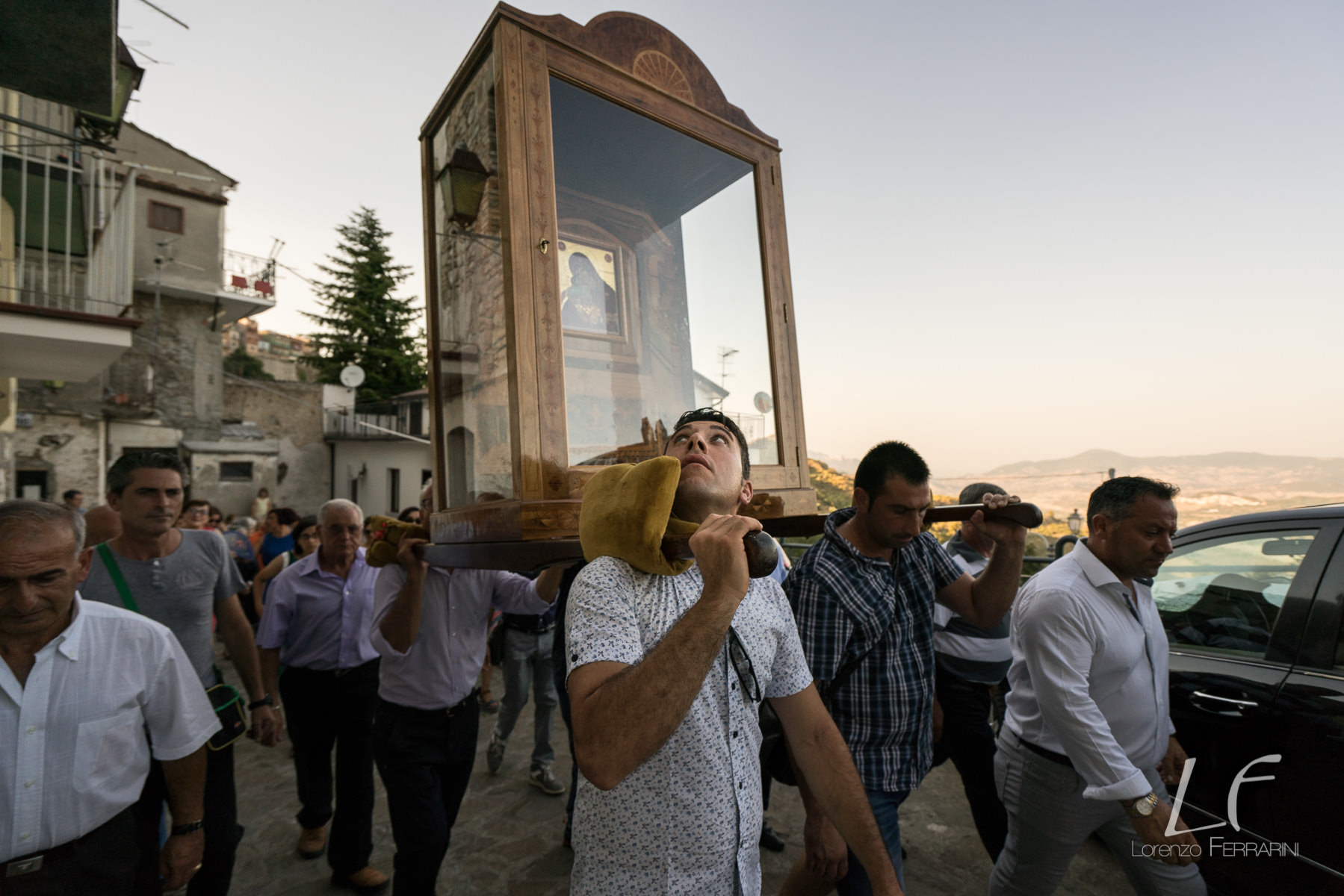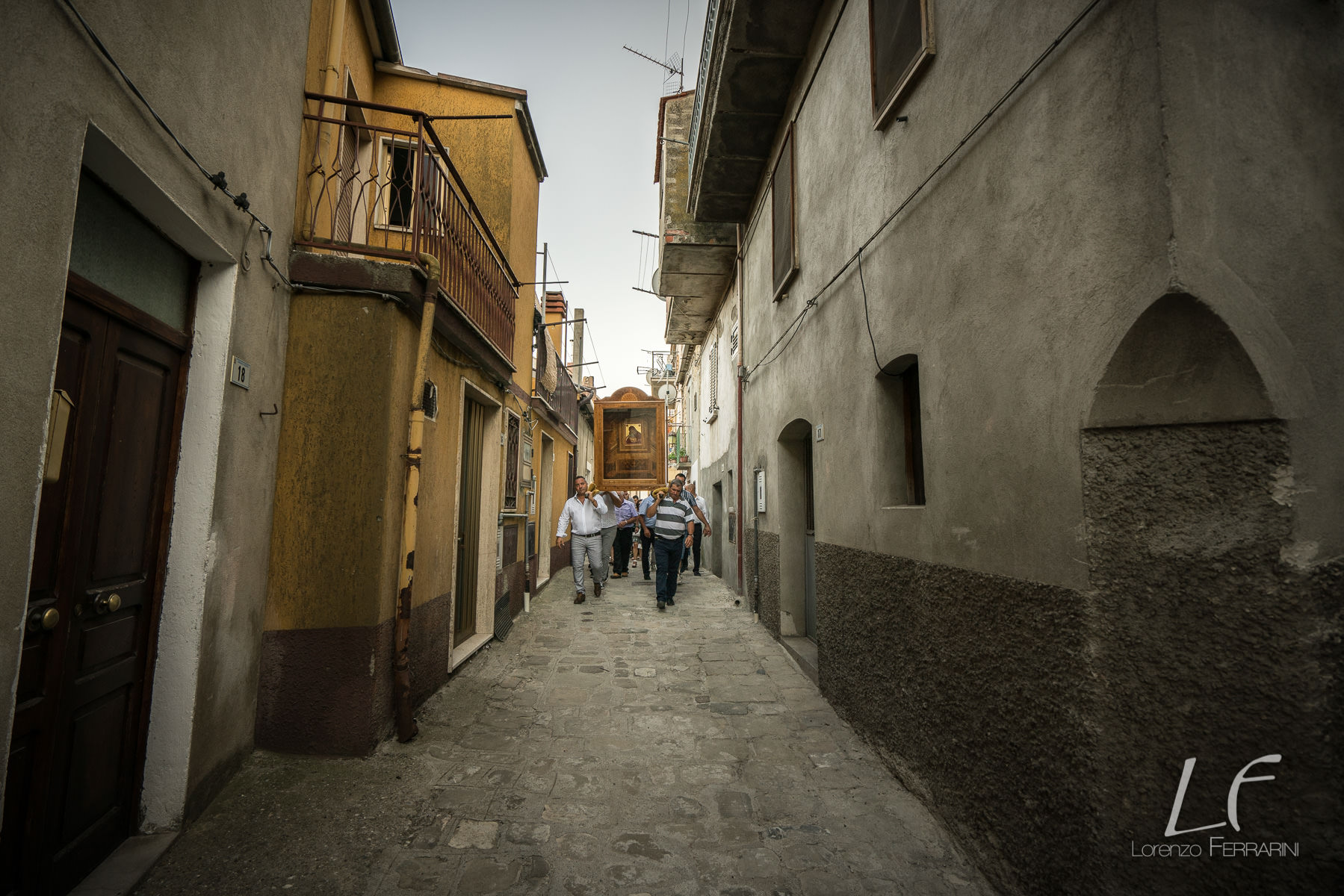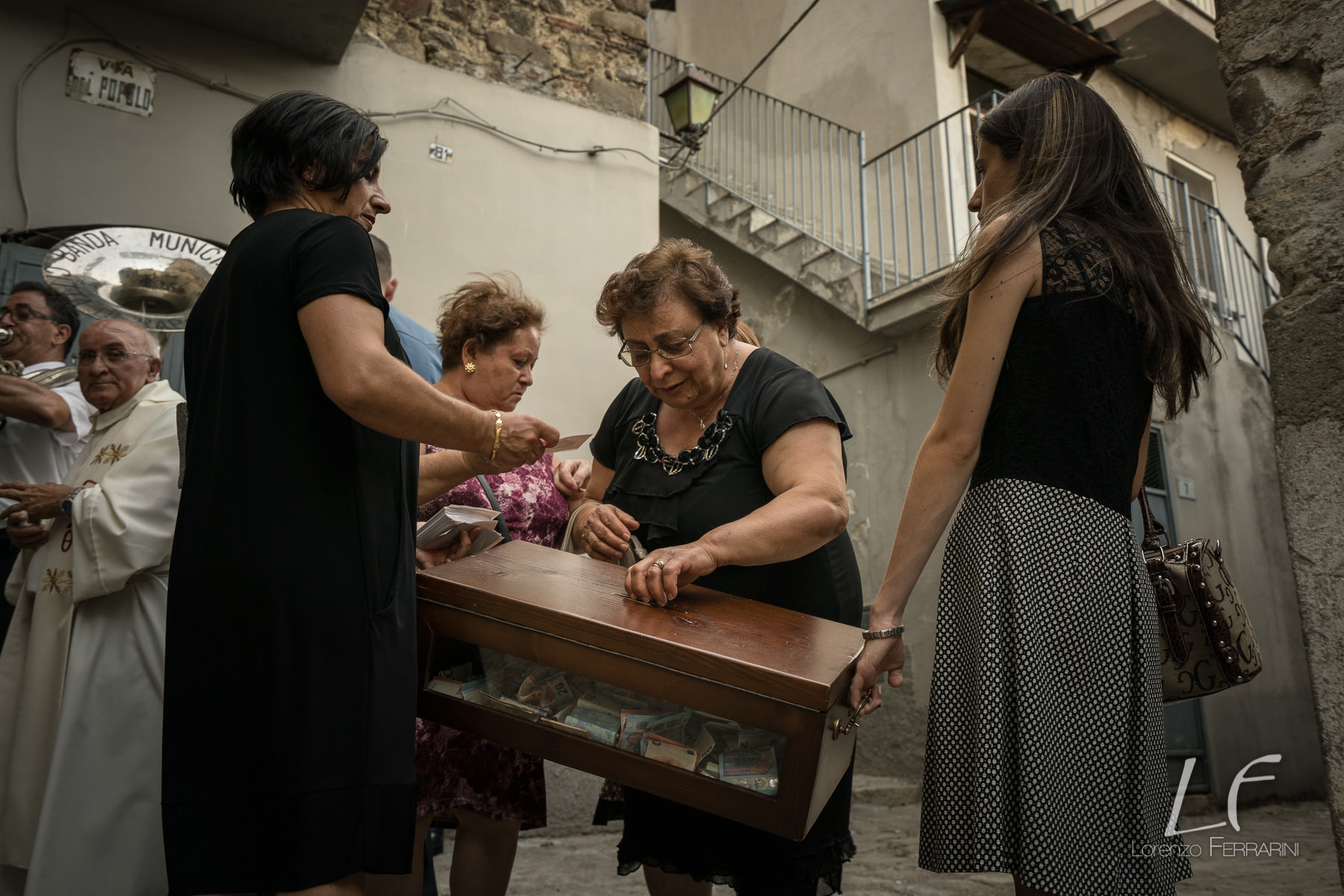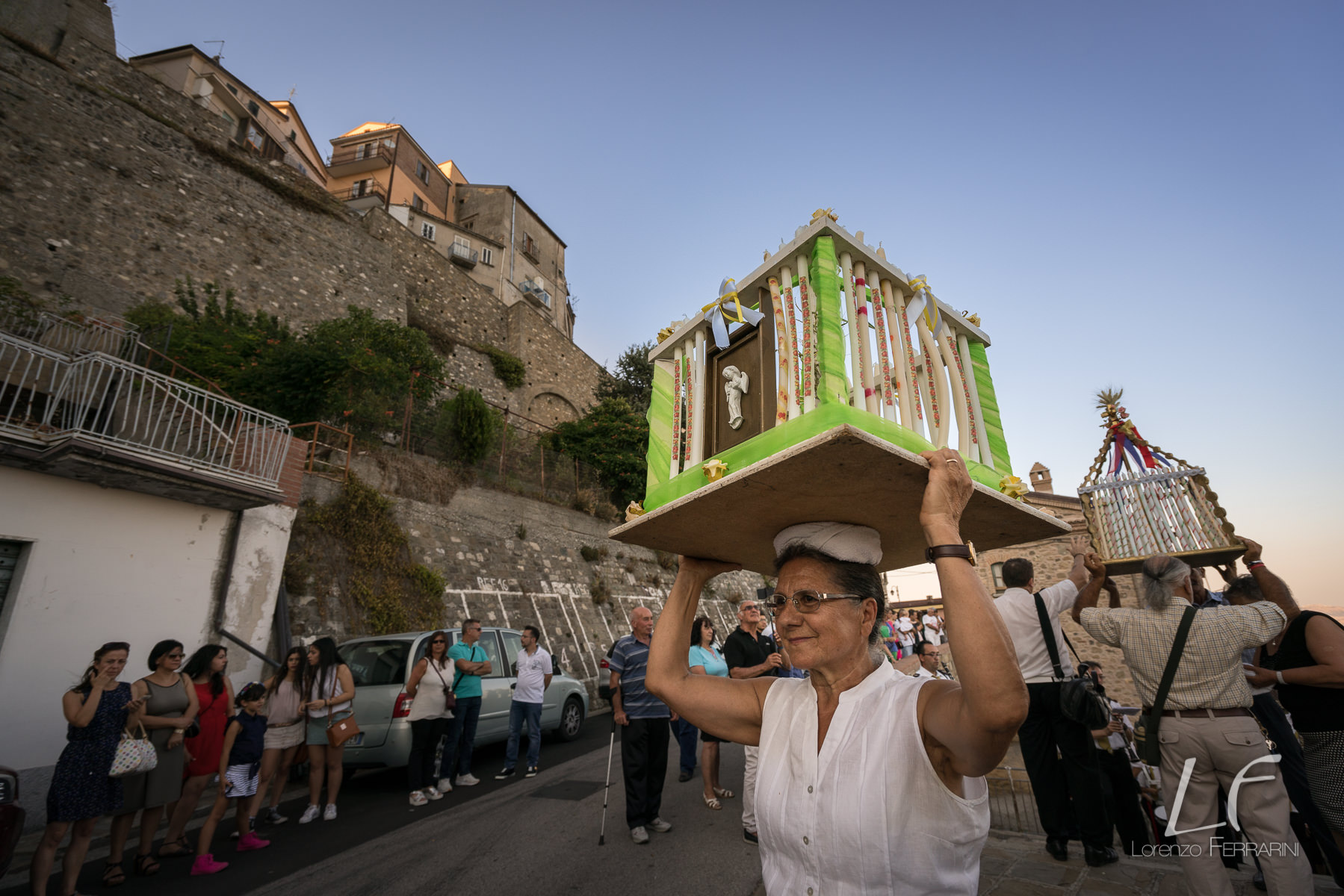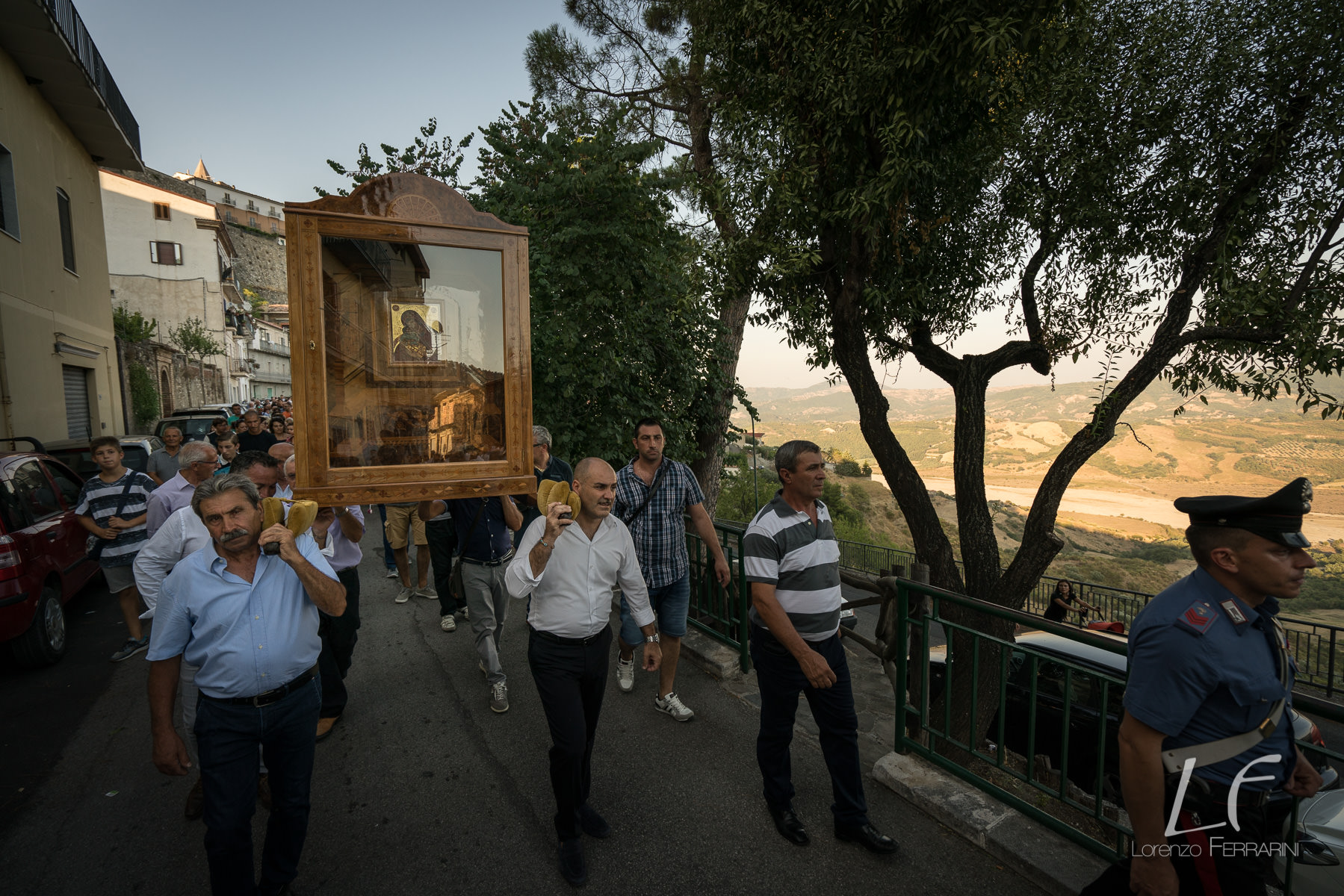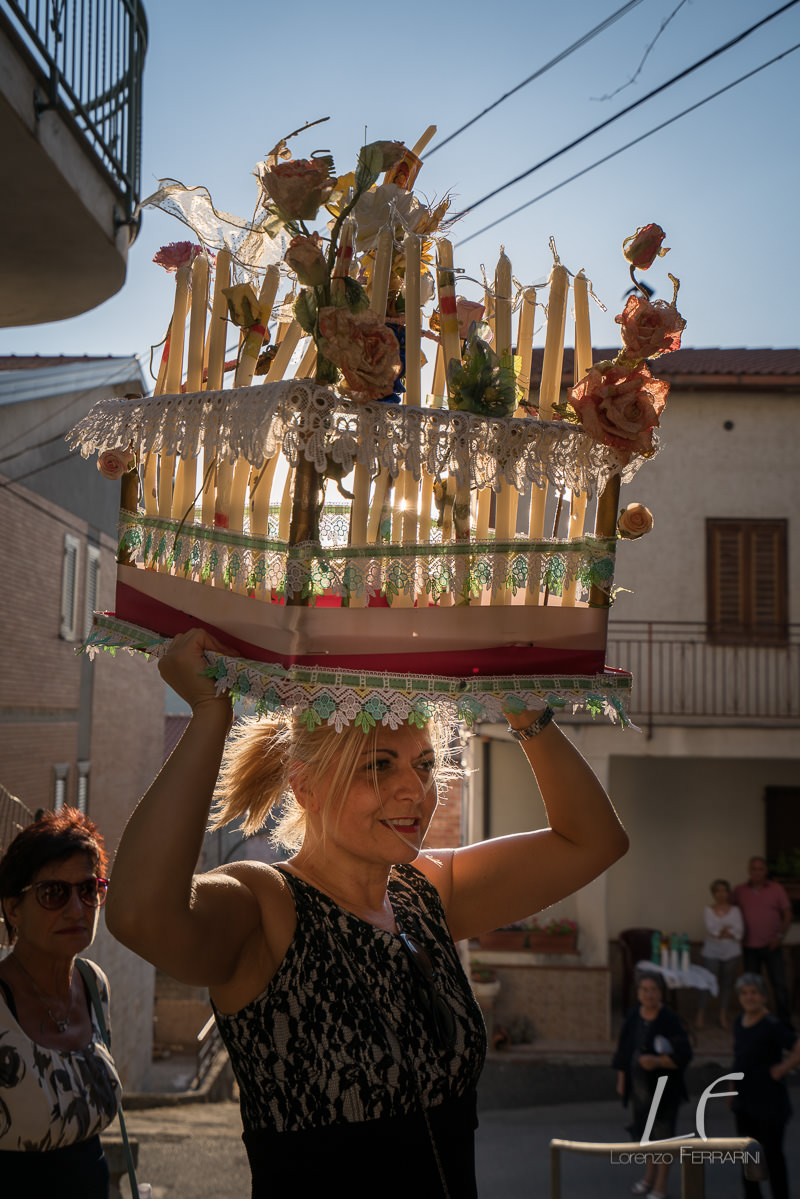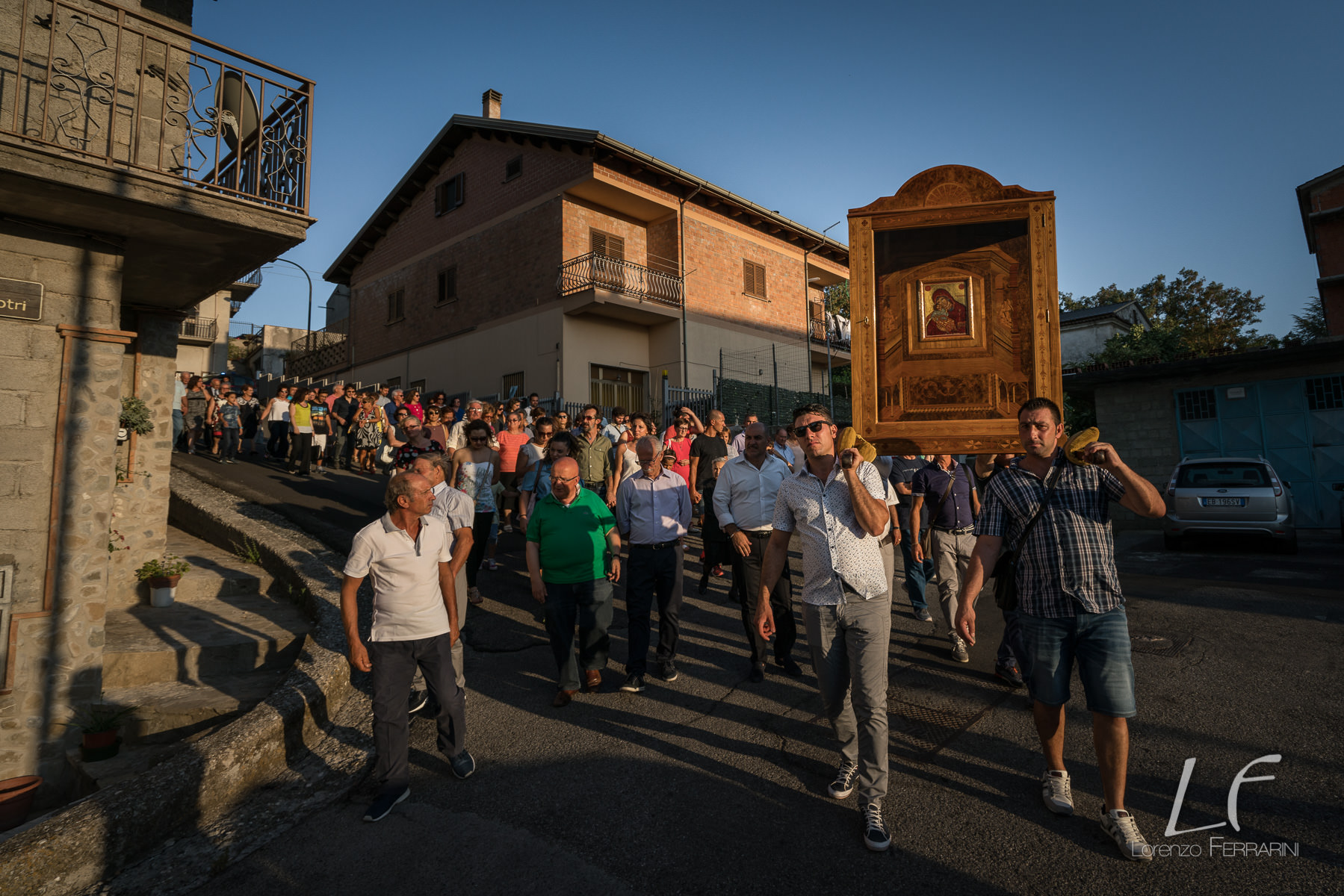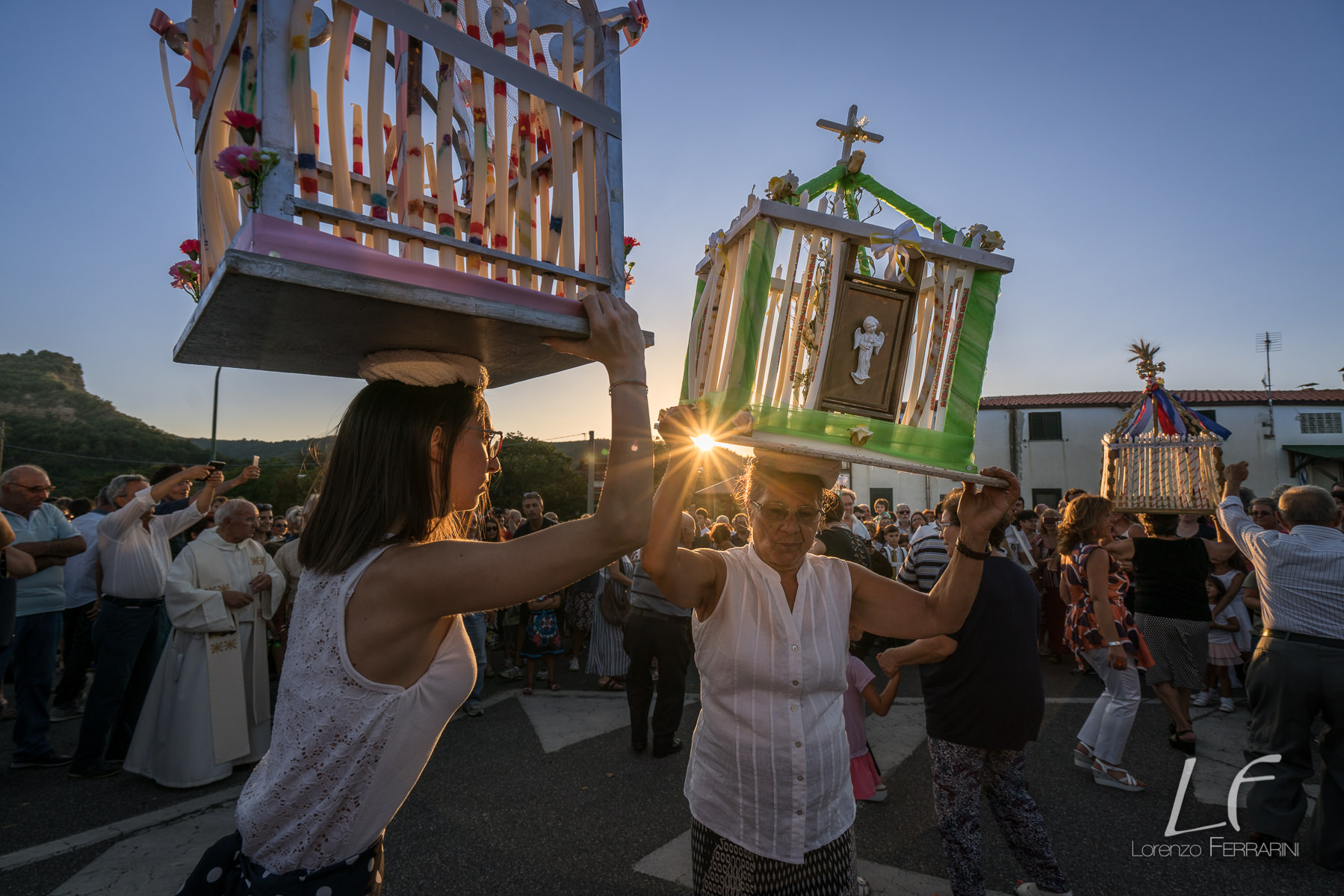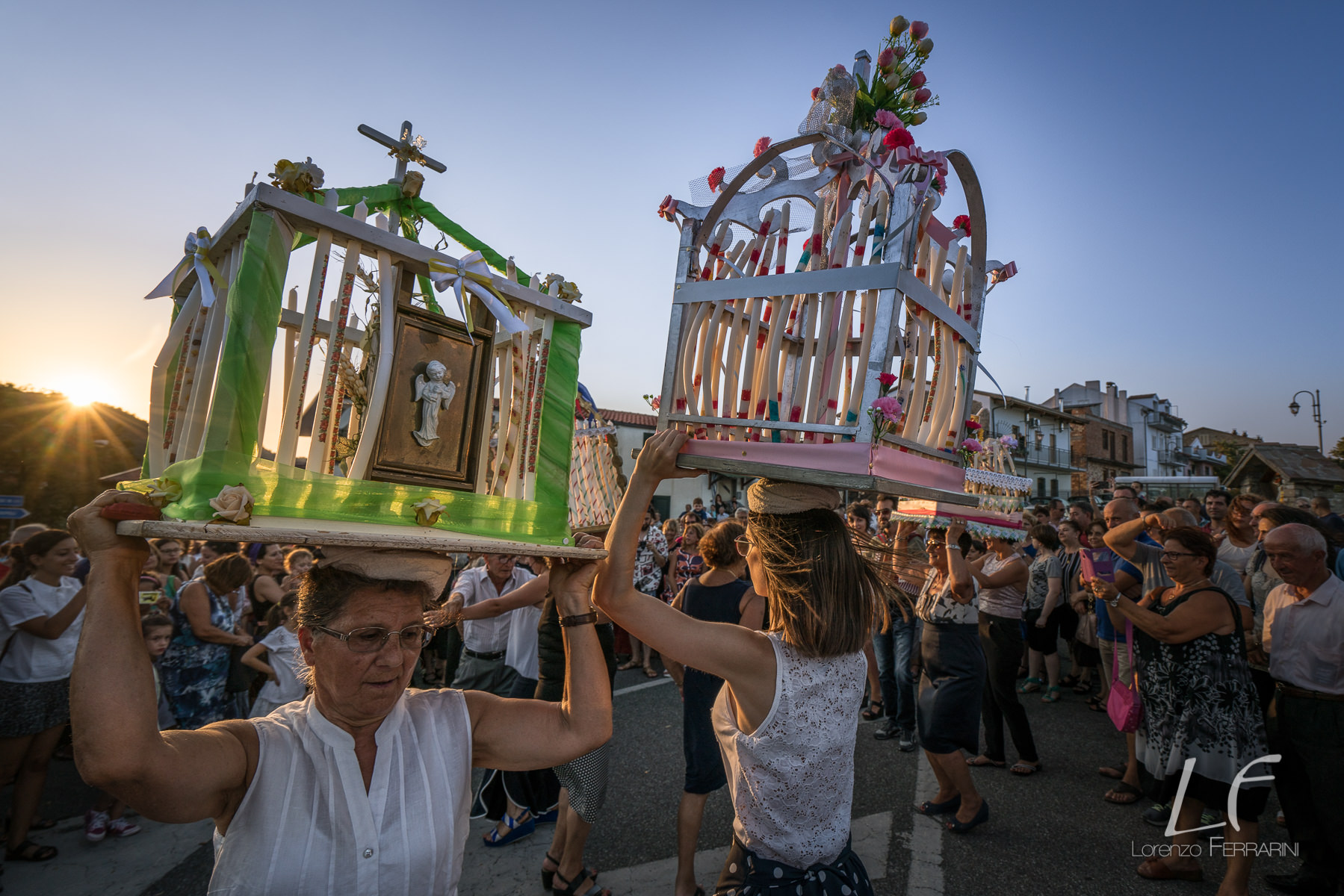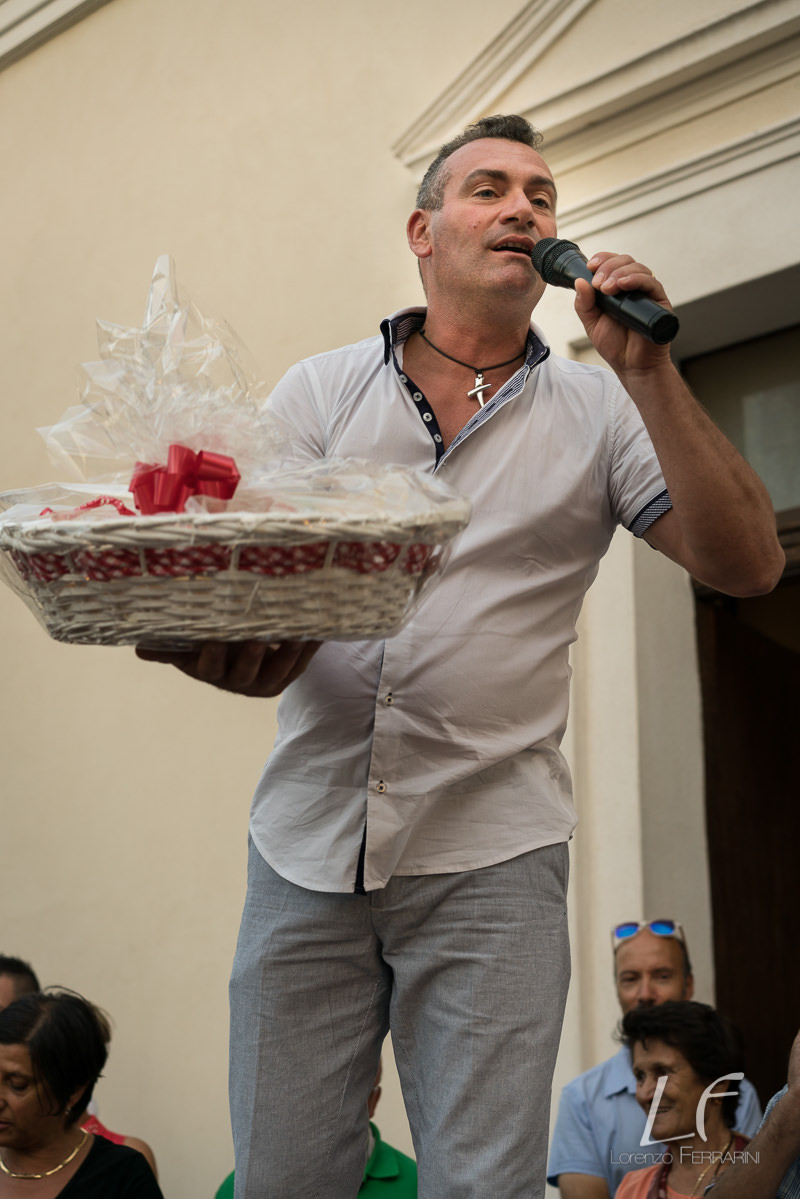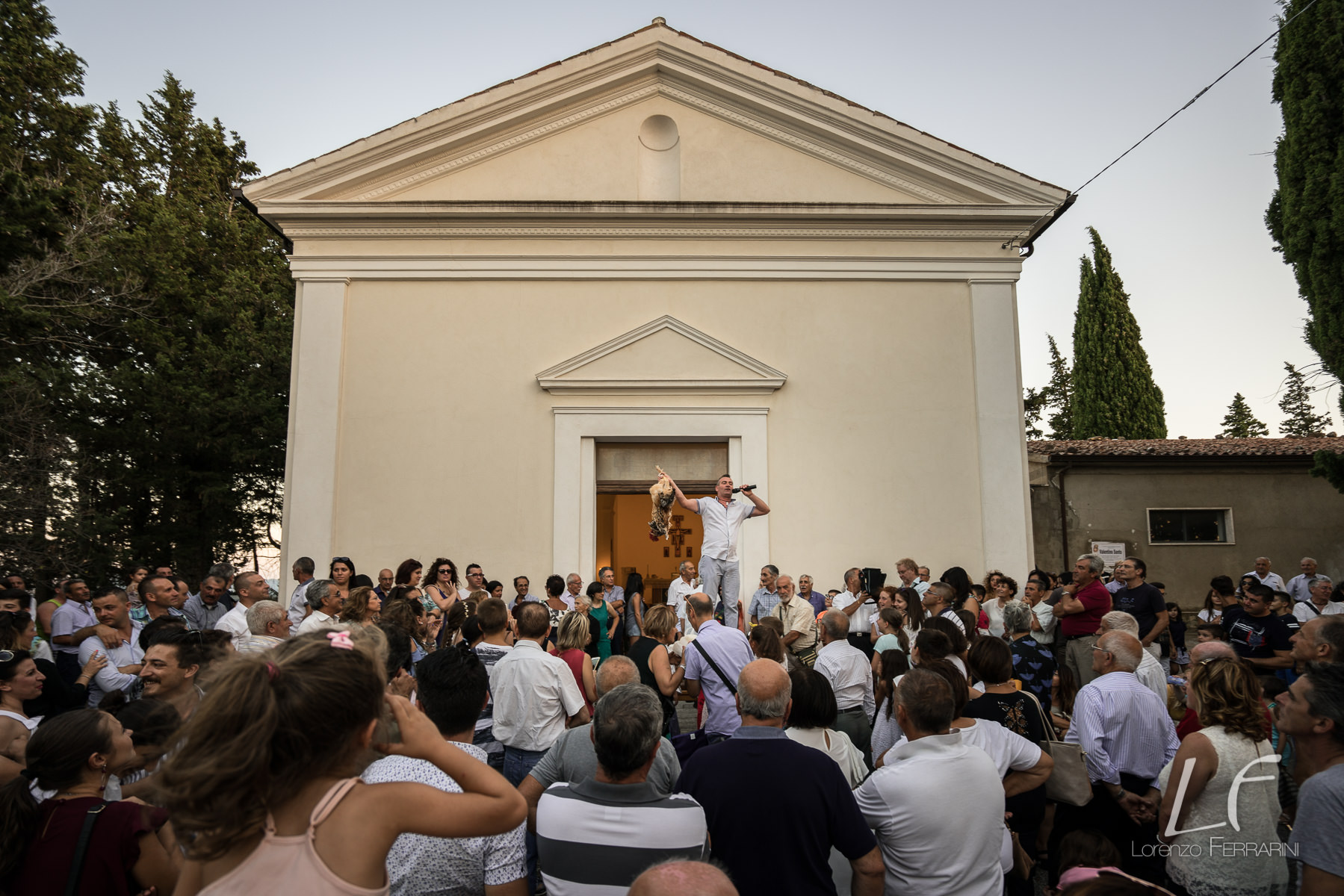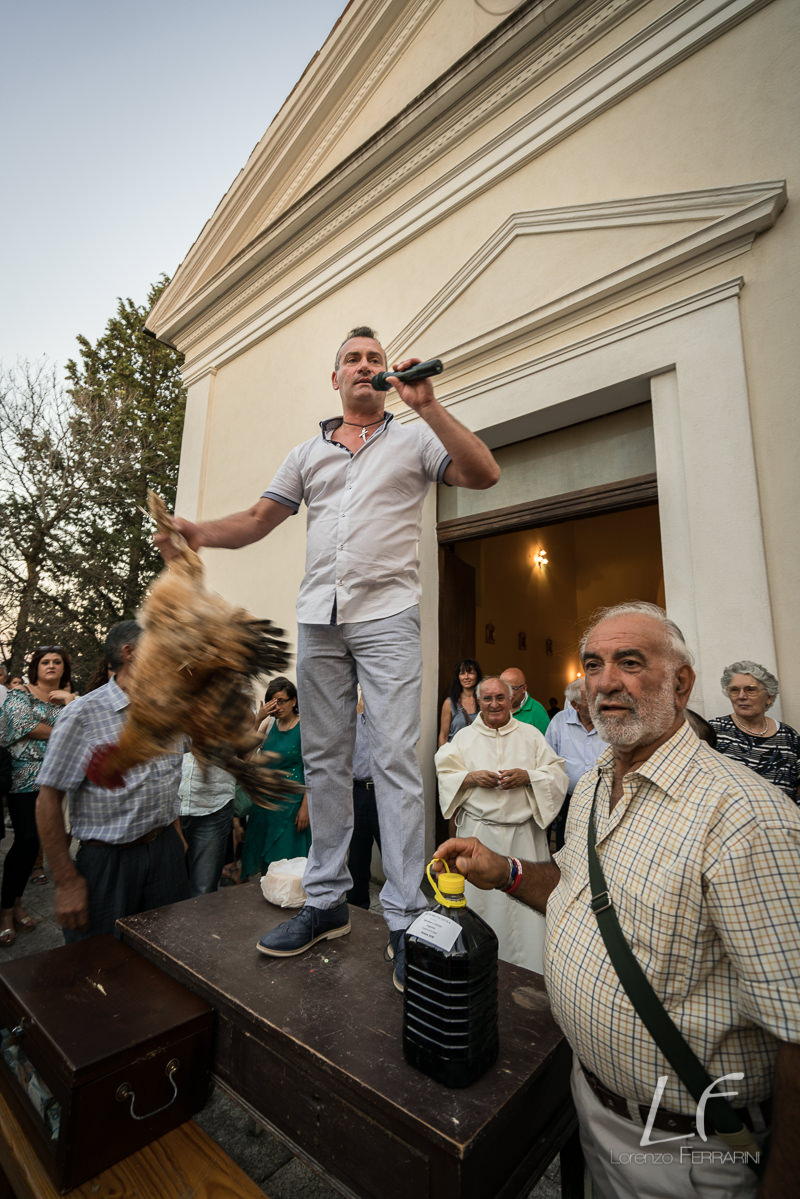Madonna di Costantinopoli in Noepoli
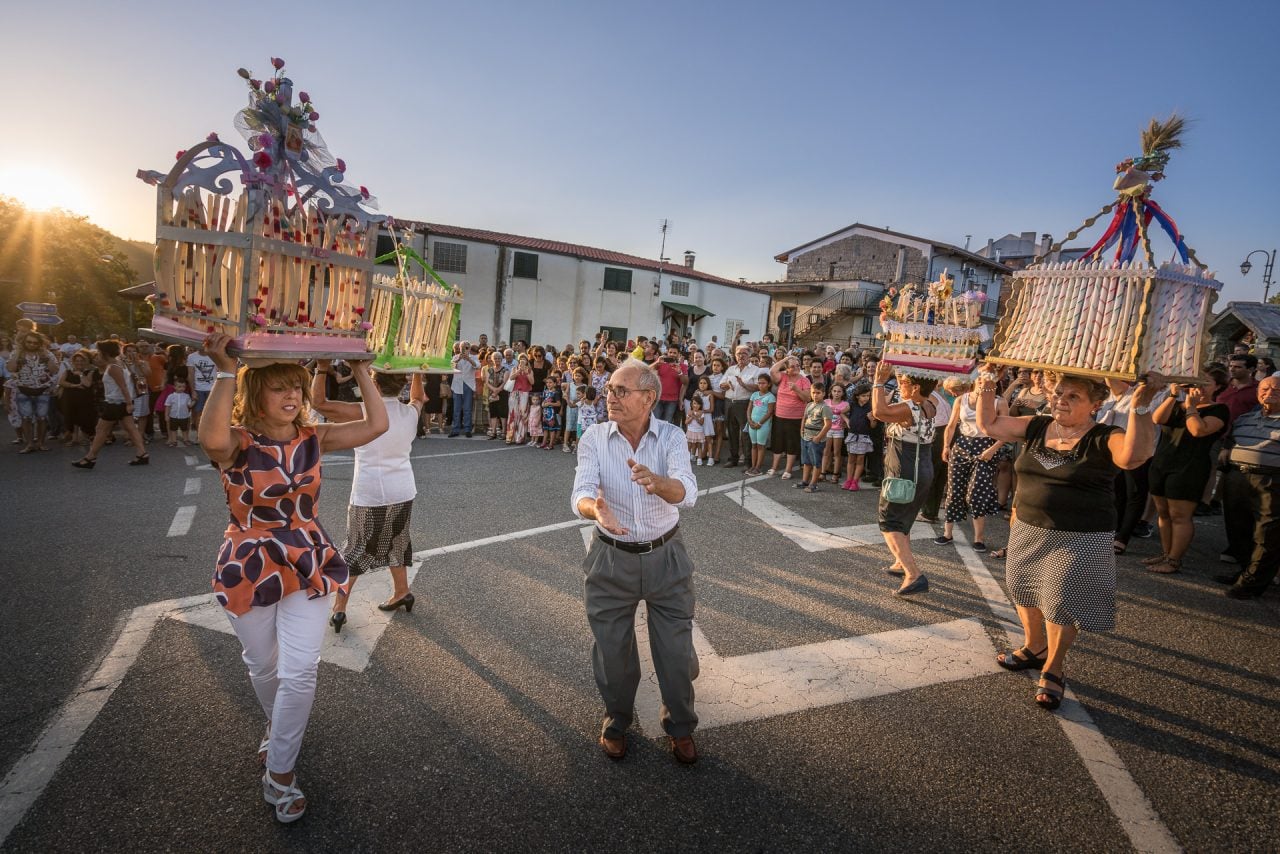
The village of Noepoli has an ancient and fascinating history as a cultural centre for Greek Basilian monks in the early middle ages and later as the capital of a local fief. Unlike many of the neighbouring villages where the Virgin protecting the inhabitants is in the shape of a statue, in Noepoli the procession I photographed on 6 August 2017 is centred around a painting, specifically an icon painted in byzantine style. A more ancient painting, perhaps a copy of a Greek icon, was stolen in 1984 and the present version was painted by the priest of the neighbouring village of San Paolo Albanese, which is populated by an ethnic minority of Albanian origin and belonging to the Greek Byzantine Catholic Church. These happenings seem the closing of a circle, as the title of Madonna di Costantinopoli seems to refer back to its status of “refugee” image, arrived with the Basilian monks, fleeing the iconoclast decrees by Emperor Leo III of Constantinople.
Along with the icon of the Virgin, women and men carry cirii (votive offers of candles) and gregne (offers made of wheat sheaves). When I visited in 2017 the candles where there but all that remained of the wheat was a small bundle on top of one of the cirii. Here, as elsewhere, it is increasingly difficult to procure suitable wheat spikes as villages depopulate and their inhabitants are less and less reliant on agriculture. While elsewhere harvest rituals such as this one are undergoing a revival, in Noepoli the connection with agriculture seems close to being lost, and what remains is just the Catholic festival. But the oral tradition narrating the origin of the painting tells of how the image was found by some oxen in a field, who kneeled in front of it while a farmer was ploughing a field, thus connecting the painting directly to the world of agriculture.
These photographs are part of a series on wheat festivals in Basilicata, in this case made with a Sony A7RII and three lenses: Sony 16-35/4 FE, Sony 55/1.8 FE and Zeiss 85/1.8 Batis.

